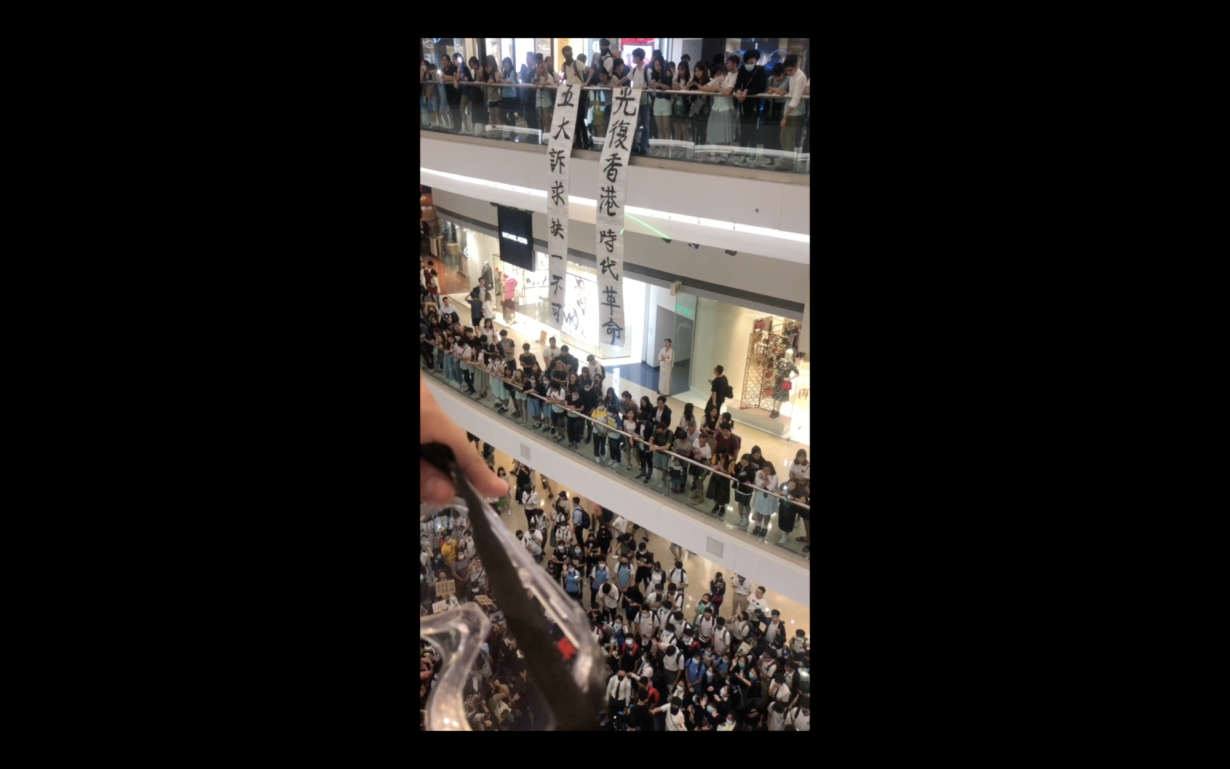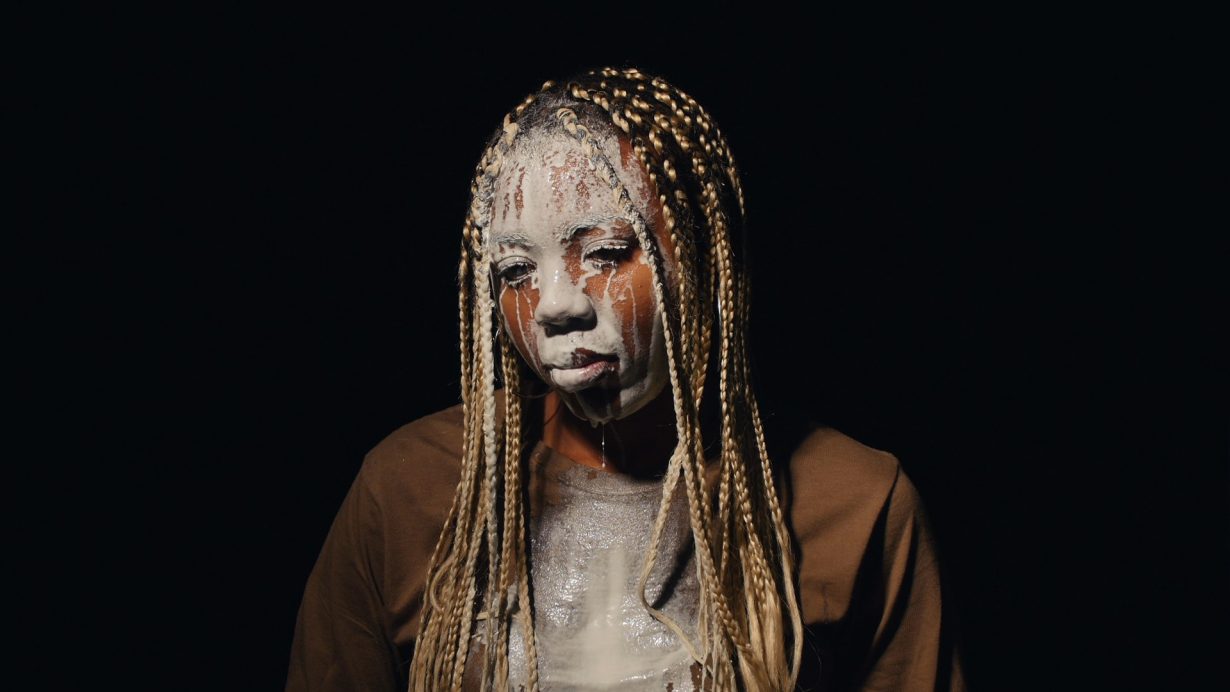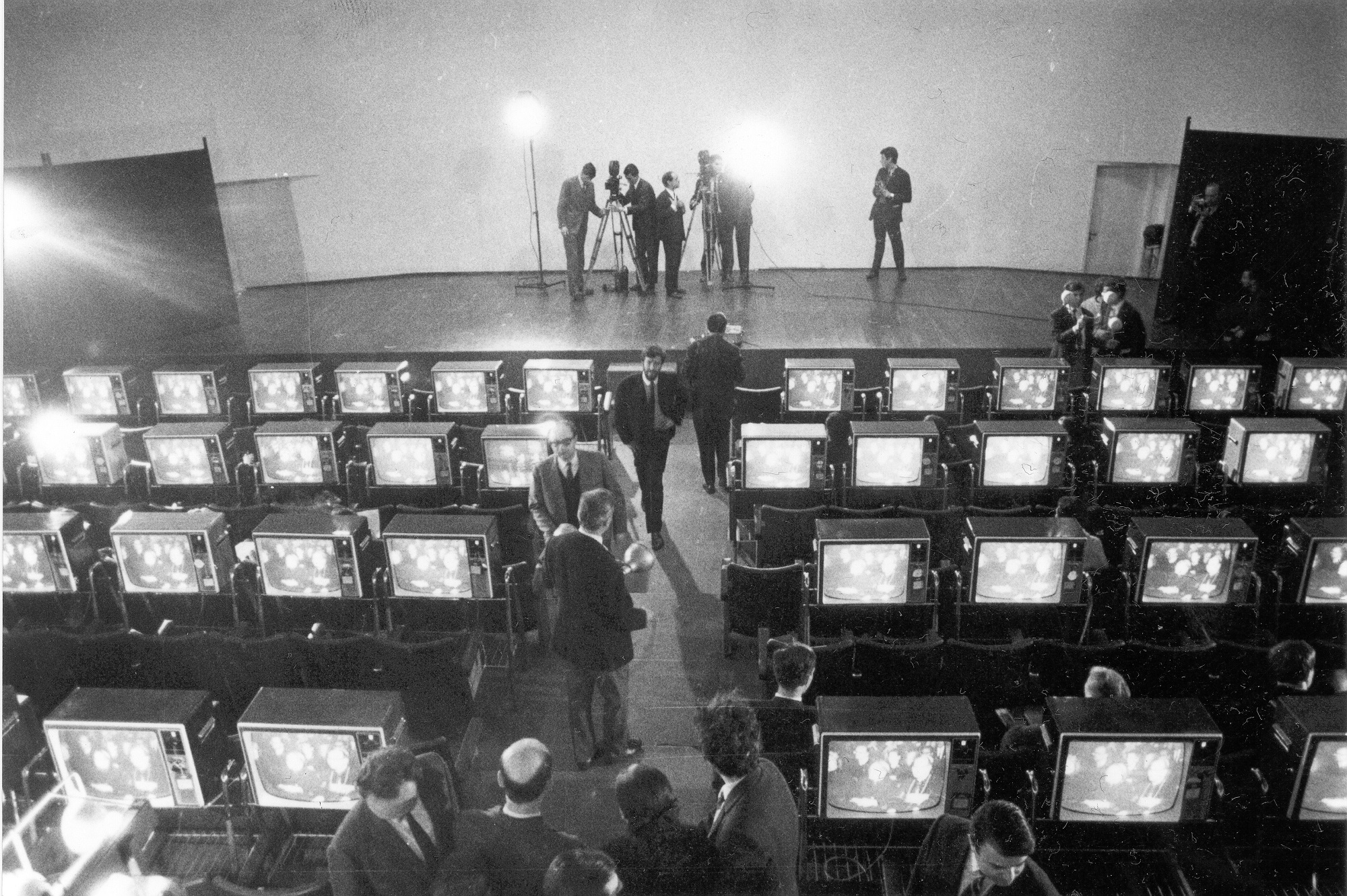At MoMA’s largest media exhibition to date, the polemical power of transmission-based works is explored in works that are at once personal and political
Mona Hatoum’s 1988 video Measures of Distance features photographs the artist took of her mother in the shower. According to a letter from her mother, which Hatoum reads aloud, these intimate images of artistic expression irritated the artist’s father, who perceived them as a form of “trespass” against him. The Lebanese Civil War had since separated the women – one in Beirut, the other in London. Nevertheless, the mother’s cadences can be heard in the daughter’s voice, as if Hatoum were smuggling her mother’s personality out from behind a patriarchal censor. Such ideas – that the image, once captured, trespasses against authority, that people have the power to transmit unsanctioned information across time and space, and that broadcast makes the personal political and vice versa – are latent in a wide range of practices considered ‘video art’. These tensions and revelations recur throughout MoMA’s sprawling sixth-floor exhibition Signals: How Video Transformed the World – in which Hatoum’s piece appears along with over 70 other transmission-based works – forming the emotional rip current of what is, at first glance, a show that’s all about visuals.
Signals is MoMA’s largest media exhibition to date, showcasing over half a century of work starting from the 1960s, a decade marked by the release of the Sony Portapak, the first commercially available portable camera, which put agency in the hands of ordinary consumers and artists, even as mass media became synonymous with corporate power in the West and the state apparatus in the East. As the curators point out, viewers are seldom brainwashed so much as they are actively ‘talking back’, jamming signals, pirating, infiltrating and testing alternatives to mass media. Signals proceeds from the truism that the televisual image is both constructed and unstable, and argues that these qualities are what make video a powerful tool for protest. Throughout the show, we see ways in which rogue signals persist across time and geography, connecting, for instance, pro-democracy struggles in China to those in Myanmar and the fight to preserve public space in Russia to similar questions being asked in Sweden.

The first work one encounters on the sixth floor is Kit Galloway and Sherrie Rabinowitz’s Hole in Space (1980), a split-screen satellite broadcast between Lincoln Center in New York and Century City in Los Angeles that stands sentry on adjoining walls by the entrance. In this then-novel work, crowds in two cities gather, with enthusiasm and slight disbelief, before their counterparts on the opposite coast. This early telematic transmission primes the viewer to spot moments of recognition between everyday people separated by literal and figurative distance throughout the show.
It is important to note that the medium of video is not solely the image on the screen, nor is it limited to the screen itself or where the image is stored. It is instead something wholly immaterial: an instant transmission that reaches a global network. Nonetheless, Signals does not hide the hardware that keeps its transmissions flowing. Rows of monitors, hot beams of light from projectors and structures like Stan VanDerBeek’s 1964–65 Movie-Drome – the refabricated dome of a grain silo in which viewers lie on cushions and watch montages flashing overhead – fill the exhibition space and compete for attention. Audio from each work bleeds into the galleries, adding a layer of white noise to the chaotic energy in the rooms. Within the frenzy, however, patterns emerge: crowds assemble, classified information leaks, images become visible, then fugitive, glitched and transfigured.

Capturing and circulating footage from political movements indexes and potentially implicates those present at scenes of unrest. Doing so, however, is a way to oppose both the state and mass media’s selective and exploitative gaze. In response to news blackouts in China after the Tiananmen Square massacre that suppressed public knowledge of the death toll in Beijing, Dara Birnbaum excavated clips related to the 1989 pro-democracy demonstrations, including the Chinese government’s decree to end satellite broadcasting. Her five-channel video installation Tiananmen Square: Break-In Transmission (1990) loops these clips on LCD screens extending from the tentacular arms of a large, conspicuous metal scaffold.
Tiffany Sia’s short film Never Rest / Unrest (2020), made 30 years later on Sia’s iPhone during the 2019 Hong Kong protests, documents the quieter, less newsworthy intervals of civil unrest: protesters’ subway commutes to and from demonstrations, conversations in secluded alleyways and moments of peace. Works such as these commemorate, to quote Harun Farocki, whose work also appears in the show, those who ‘dared to record’ what lay before their eyes.

While the televisual medium’s knack for bridging physical distances is no longer ground-breaking, its poignancy still lies in its ability to close temporal gaps. For example, Emily Jacir’s Ramallah / New York (2004-05), which compares the cities’ hair salons, shawarma shops and travel agencies on twin flat-screen monitors, feels stilted in its critical capacity. Conversely, Fujiko Nakaya’s Friends of Minamata Victims – Video Diary (1972), which documents protesters stationed in shifts outside the headquarters of a Tokyo-based corporation charged with severe cases of mercury poisoning, demonstrates more complexity because the artist not only filmed the protest but also brought a battery-powered TV monitor to the sit-in, which she used to play back footage from previous shifts, allowing the crowd to see and relate to those who’d come before them.

Absent from the exhibition are names like Vito Acconci, Lynda Benglis and Bruce Nauman, whose videoworks appear in Rosalind Krauss’s oft-cited 1976 essay ‘Video: The Aesthetics of Narcissism’. Signals has little to do with narcissism. However, resonances between the self – the personal – and the political are omnipresent. Consider, finally, Martine Syms’s Lessons I–CLXXX (2014–18), a 90-minute visual poem constructed from found footage that indexes the Black radical tradition via a hyperspecific culling of home videos, memes, talk shows and sitcoms. Likewise, Signals traverses an eclectic medium’s history in a way that illuminates human connections within the polemical and vice versa. In a world whose social spheres have collapsed into handheld devices, the show attunes us to how far connectivity has gotten us and how much farther we still have to go.
Signals: How Video Transformed the World at MoMA, New York, through 8 July
